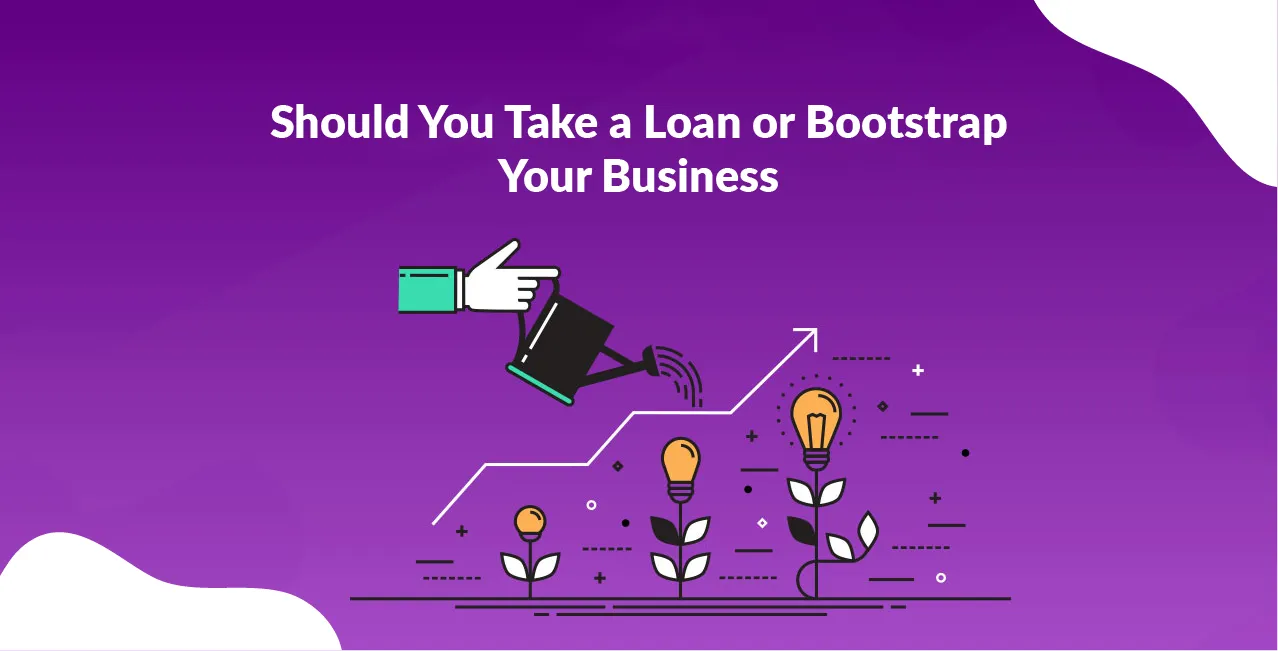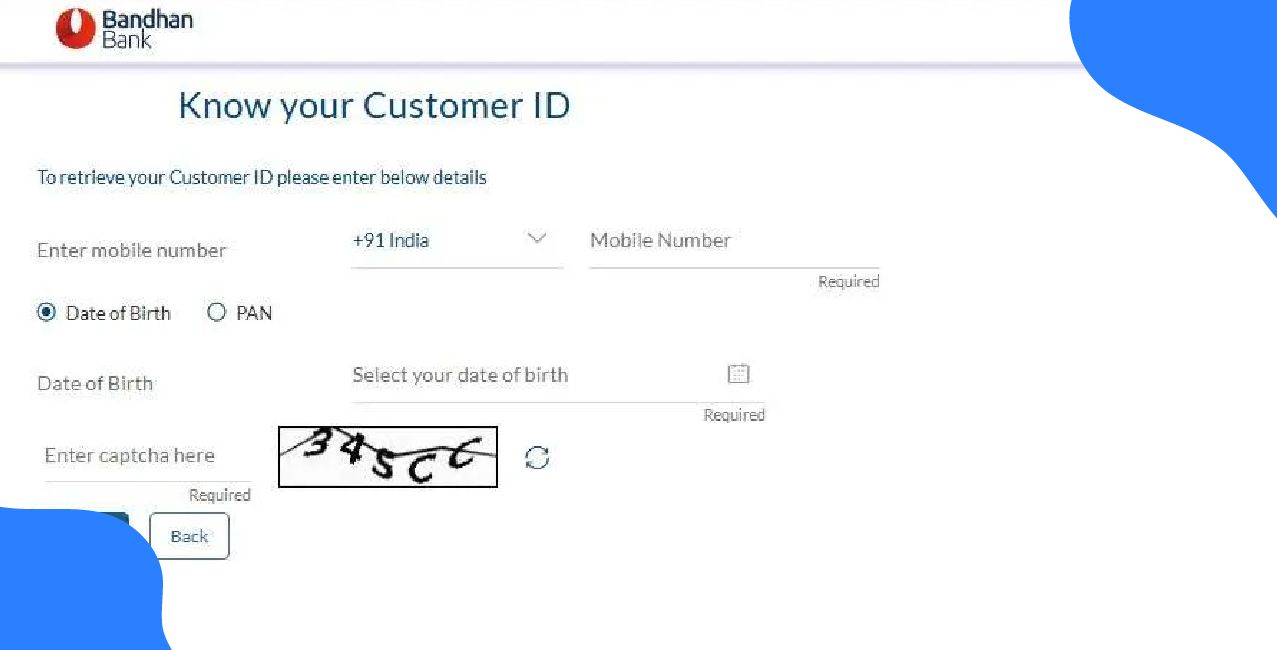
Author
LoansJagat Team
Read Time
6 Min
09 Jul 2025
Should You Take a Loan or Bootstrap Your Business? Experts Debate
‘Babuji ne kaha gaon chhod do
Paro ne kaha bank se ummeed chhod do
ek din aayega jab woh kahenge, start up hi chhod do’
But you, don’t let go of your idea and the hope it carries. Let me tell you the case of Riya Mehra, who is a successful graphic designer today. When she started her journey, she needed ₹12.5 lakh for setting up the business. She had ₹3.5 lakh in savings, and family support of another ₹1 lakh, still ₹8 lakh short.
She considered two choices:
- Take a ₹9 lakh business loan from a FinTech lender at 14% interest for 4 years, or
- Start with ₹4.5 lakh, focus on social media pre-orders, and grow organically (bootstrap).
Here’s how her options looked on paper:
If she had taken the loan, she would have had to deal with repayment pressure. Bootstrapping would keep things stress-free, but slower. So, which had she chosen? Well, she chose the bank based on factors that we will discuss in this blog.
Why Would Anyone Choose Bootstrapping?
Pros
Full Control & Equity Retention
0 dilution, your decisions, your business, no one gets to say in it. That is one of the biggest benefits of bootstrapping your business: you maintain 100 % ownership.
Read More – The Bootstrap Loan Strategy: How Do Startups Grow Without Equity Dilution
For example, Shankar launched his SaaS startup in 2023 with ₹8,50,000 from his savings. By mid-2025, he hit ₹1.2 crore in revenue. He owns 100% equity. No VC, no dilution. Every decision, from pricing to hiring, is in his hands, and so are the profits..
Built‑in Financial Discipline
What do you do when you have less money and a big goal? You use every single rupee to its maximum potential and build good habits. Most bootstrapped firms start with less than $10k initial capital, and around 77% of founders use their savings to get started.
For example, Priya began her organic skincare brand in 2022 with ₹5,00,000 from a PPF withdrawal. Because it was her ‘khoon-paseene ka paise’, she tracked every rupee. 3 years later, she runs a lean operation, spending just ₹24,000/month on ops and reinvesting 80% profits into new SKUs.
This is how her discipline worked out in the finances:
Cons
Slower Growth & Limited Resources
About 90 % of startups fail because of money constraints. Yes, you read it right. Without external funding, scaling is slow, and you can’t hire the best in the market. This leads to 0 growth and a stagnant business.
For example, Karan’s edtech idea was solid, but not were no funds. With just ₹3,00,000 bootstrapped, he couldn’t hire developers. His MVP took 14 months to launch. In 2 years, the user base is stuck at 4,000. Here’s how he struggled financially:
High Personal Risk
When you bootstrap, your own money is on the line. If the business fails, you risk losing your savings or going into debt. Keep separate emergency funds for personal and business life.
For example, Neha bootstrapped her fashion startup using ₹6,20,000 from her wedding savings and a ₹1,50,000 credit card loan. Sales dropped during COVID-2.0, and she defaulted twice. She's now paying ₹6,000/month in EMI and living on a ₹12,000/month budget.
Why Experts Recommend Loans
- Quick Access to Capital
Your business needs quick access to funds to keep running and growing. Business loans work like fuel that enables purchases, hiring, or expansion. They are easily accessible (within days), and with a good score, you get good terms.
For example, Amit’s delivery startup hit a surge in demand. He applied for a ₹10 lakh working capital loan. He got funds within 10 days. He used it to lease 4 bikes, hire 2 riders.
Separation of Business & Personal Funds
Taking a business loan helps keep your personal and business finances separate. This is crucial to maintain clearer accounting and accountability. Losing in business should not affect your emergency funds. Similarly, losing an investment should not affect your business.
For example, Sonal started her cloud kitchen using a ₹7 lakh MSME loan. She pays business expenses, taxes, and salaries from that account only. Her personal savings and family emergency funds remain untouched, even after 5 months of fluctuating monthly sales.
Tax‑Deductible Interest Payments
Interest on loans is deductible under Section 80C. Borrowers can claim up to ₹1.5 lakh/year. So, taking loans is cheaper than sabotaging your business and personal life.
Also Read - Business Loan or Angel Investor – Which Gives You More Control
For example, Nikhil took a ₹5 lakh loan for machinery at 12% p.a. He paid ₹59,000 in interest in FY2024–25. His CA filed ₹1.5 lakh total deductions, including this interest, saving him ₹30,000 in taxes.
Conclusion
I will keep it simple and short; both are equally good and bad. Choose the best by knowing your risks, tracking your money, and staying consistent. Fund smart, build slow if needed, but never quit on your idea.
Frequently Asked Questions
Is it better to take a loan or use your own money?
Use savings for control and a loan for faster growth.
What are the disadvantages of bootstrapping?
It mainly leads to slower growth, high personal risk, limited hiring, and zero external support in emergencies.
Is taking a loan for a business good or bad?
It’s good if repayment is planned, credit is strong, and returns outweigh the cost.
When should you not use Bootstrap?
Avoid bootstrapping when the industry needs heavy upfront capital or time-to-market is short.
About the Author

LoansJagat Team
‘Simplify Finance for Everyone.’ This is the common goal of our team, as we try to explain any topic with relatable examples. From personal to business finance, managing EMIs to becoming debt-free, we do extensive research on each and every parameter, so you don’t have to. Scroll up and have a look at what 15+ years of experience in the BFSI sector looks like.

Quick Apply Loan
Subscribe Now


